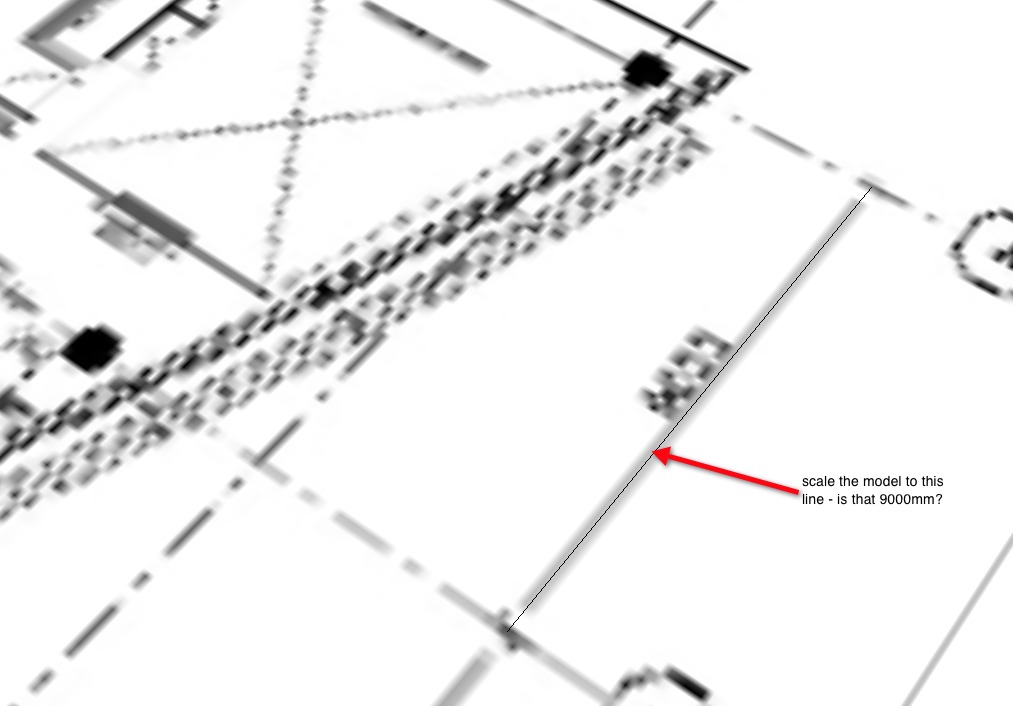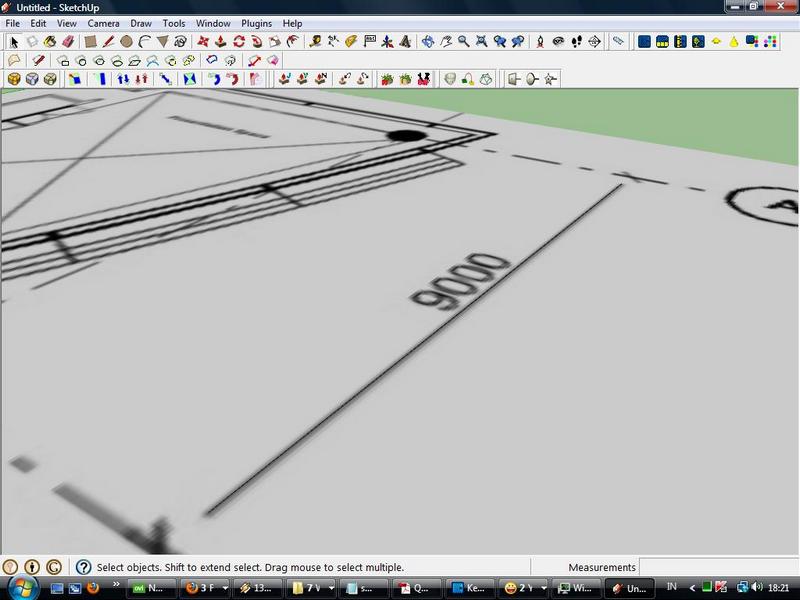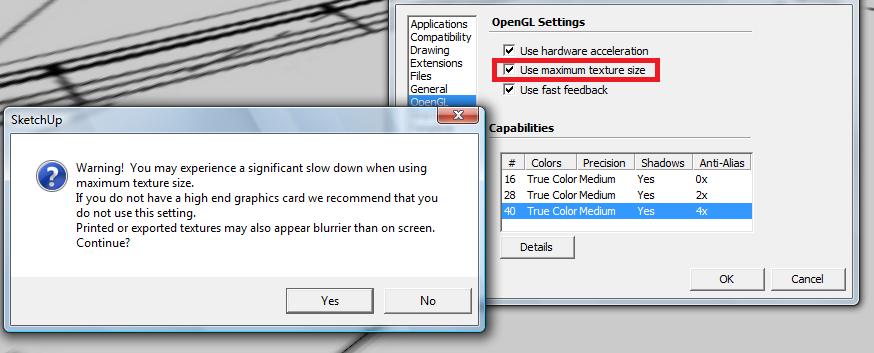Best way to get Dimensions from a fuzzy PDF?
-
I'm often given pdfs of building interiors to use for whatever I'm creating. I need these for their dimensions and general layout. I'm always battling with fuzzy PDFs inside SU when I want to scale these up. Does anyone have a better way other than mine to get better results (and not use guess work)
- open pdf in adobe reader -
- read a dimension -
- put pdf into sketchup as image -
- guess where the middle of a fuzzy line is -
- draw a line -
- scale model to the first dimension -
would a using renderer give you a better idea, draw small rectangle, render, change rectangle repeat ...... mmmmmm



-
I some times turn on Max Texture size in SU when I do that. Since SU's max texture size is normally 1024 - when you enable max you get 2048 and you get to see more details in SU.
Alternatively, split the texture into smaller pieces.
-
I'd do it much as you do... but with these additional tips...
Get the largest dimension you can from the image [e.g. across all grids added together] - that way any small errors you might make in your later 'picking-points' to 'scale' it will be minimized...
Then after the image is imported Rotate the image so the major grids or walls are parallel to the axes.
Group the image, then edit that group and use the Tapemeasure Tool; pick the two points estimating the centers of the grid-lines or whatever it is that you know the distance between; a number appears in the VCB, immediately type in your desired dimension and you are prompted to scale everything [in the group] answer 'yes' - the image is now scaled to the correct size: you can check some dimensions with the Tapemeasure Tool to be sure it's as expected.
Exit the group edit, locate the group so that a logical point in the image is at the origin - e.g. grid intersection A-1, then lock the group so you can't accidentally change it later.
Save the SKP.
Note that if the image were the only thing in the model then there's no need to group it - I simply advised it to avoid changing any existing stuff, because the Tapemeasure Tool trick will scale everything in the current context - including the whole model! -
I think thomthom Is right.
Your image size is far to big to be imported to SU, this is the piece of preview from some cut piece of the picture you provided when i put the in su
It's not as blurry as your screen shotYou can enable maximum texture in Window->Preference->on OpenGL tab, check the maximum texture size.
you will get a warning but don't worry to much about it since you need them only once for modeling it's base. you can turn them off later.

If not, then I think The problem mostly caused by your image size resolution is to small. You can use most basic image editing program to enlarge and then sharpen them to reduce the blur.
-
@fabiazz said:
If not, then I think The problem mostly caused by your image size resolution is to small. You can use most basic image editing program to enlarge and then sharpen them to reduce the blur.
SketchUp will normally not display textures any larger than 1024px - so any texture you feed it that is larger will be sampled down. (But at the same time SU will save the original full size in the model.)
So if you need larger textures than that in SU you either have to enableWindow > Preferences > Use Maximum texture sizeor split the texture into smaller chunks. -
I have this problem also. Since I have Windows, I can not import a PDF into Sketchup. If the PDF is a printed version of the ACAD file, I use the PDF-2-DXF program to convert the PDF to a DXF file and import the DXF into Sketchup. If it is a scanned PDF, I import the file into Adobe Elements and save as a PNG file. From the PNG, I select sections of the original PNG that I wish to model and import these sections into Sketchup to use as a reference for modeling.
Question to the Sketchup gurus out there, why does a Mac import PDF and a Window system not?
As for using the tape measure to scale the whole drawing. As said before, use the largest measurement you can find to scale the drawing. However, I have found that sometimes, the scaling is not correct in both the X and Y direction. So I sometime, I tweak the scaling in the X or Y direction to get as close as possible to the correct measurements in the X and Y directions.
-
Do you need the entire PDF page imported into SketchUp? When I need to import part of a PDF file into SU, I do the following:
In Adobe Reader or Acrobat I zoom in on the area I need and get as large a view of that area as I can. Then I take a snapshot of that area (Tools>Select & Zoom>Snapshot) and paste that into an image editor. I generally end up cropping the snapshot even more tightly. Then I save the image as a PNG which I import into SketchUp. If the PDF is really large, I'll zoom in on sections of it and make snapshots of overlapping areas. Then I make PDFs and import those. I'll bring them in as images, explode them and make components of them. Then I can open them one at a time and resize them with the Tape Measure.
-
@unknownuser said:
Question to the Sketchup gurus out there, why does a Mac import PDF and a Window system not?
Because PDF is an integrated part of the Quartz graphics engine of Mac OS X.
converting vector based PDFs to DXF/DWG can be done w/ the mentioned tool or w/ recent Adobe Illustrator versions if avail.
converting raster data to DXF/DWG can be done w/ vectorization applications as e.g. WinTopo or LiveTrace of AI (PDF). The available freeware version of WinTopo is great for playing around and seeing which results are achievable, don't expect everything being exact in size or angle or entity type etc.
hth,
Norbert -
This is all very valuable stuff. Thank you everyone who has contributed to my question.
Advertisement







